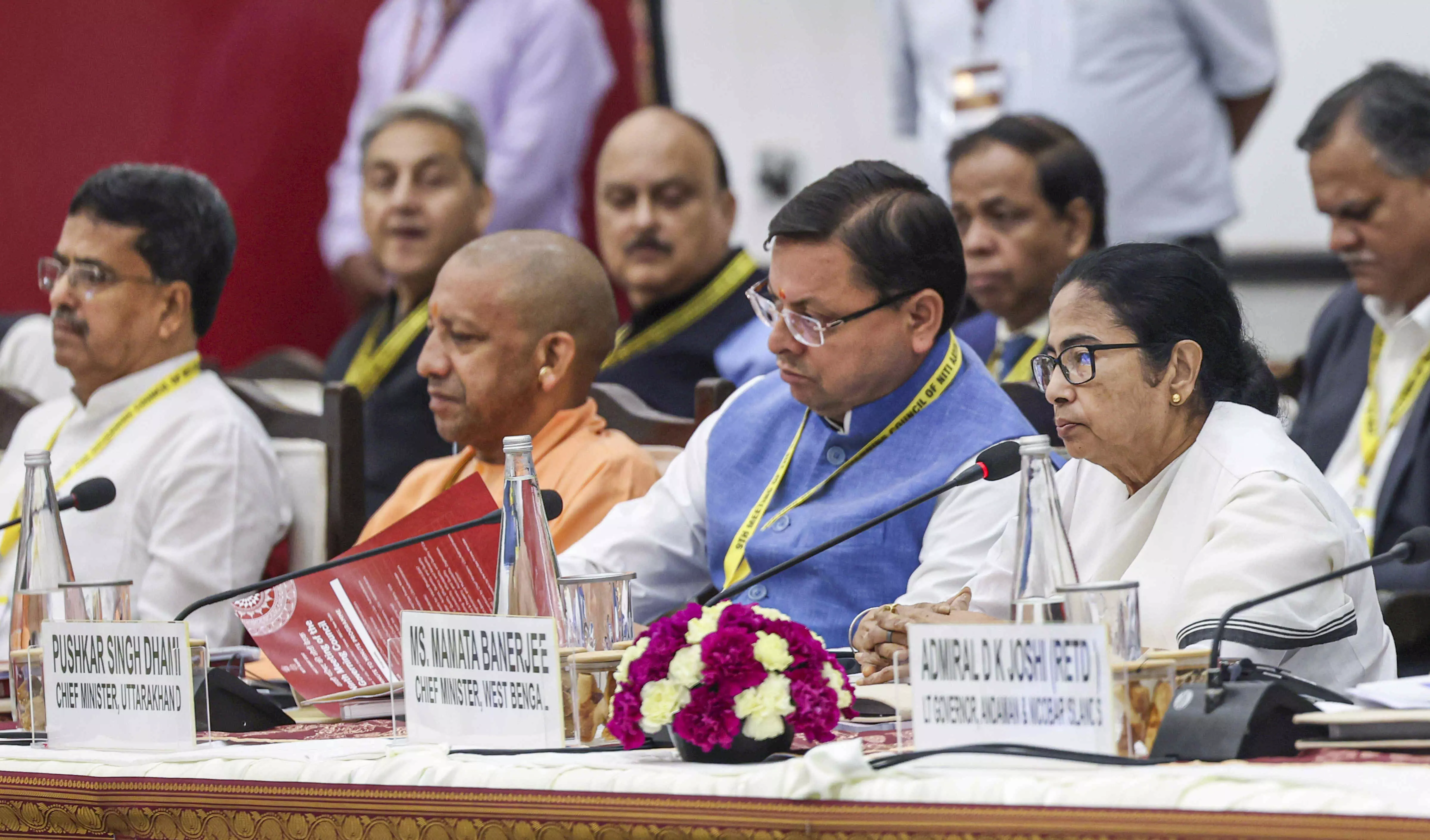Missing ingredients

The ninth Governing Council meeting of NITI Aayog has put forth an ambitious vision of making India a developed nation (Viksit Bharat) by 2047—the centenary year of the country’s independence. In order to achieve that status, NITI Aayog has set a concrete target of making India a USD 30-trillion economy with a per capita income of USD 18,000 per annum by 2047. That would indeed be a great leap. Currently, India is a USD 3.36-trillion economy with per capita income of mere USD 2,392. The pursuit of transitioning from the middle-income to high-income level, as per NITI Aayog, has to be sustained by a consistent growth rate ranging between 7-10 per cent for 20-30 years—a feat that very few nations have achieved thus far. Apart from economic parameters, the concept of Viksit Bharat also entails robust social, cultural, technological, and institutional features.
The real question is: on what pillars is the castle of NITI Aayog’s lofty ambition built upon? The planning body seeks to upgrade the capabilities of the manufacturing and logistics sectors. NITI Aayog has also highlighted that ramping up the competitiveness of industry is an essential pre-requisite for an upgrade of workforce from agriculture to manufacturing and services. A synergetic balance between energy, security, access, affordability and sustainability has also been emphasised upon. However, the most essential ingredient for Viksit Bharat @2047 is the synergy in actions of different sectors and regions of the nation. In fact, the NITI Aayog itself highlighted that a vision for India cannot be the work of a few individuals or of one government. It has to be the result of the collective efforts of the entire nation. Unfortunately, for the time being, neither the highlighted sectors are doing up to the mark, nor are there traces of collaboration and cooperation among various stakeholders.
Strikingly, the chief ministers of seven states— Tamil Nadu, Kerala, Karnataka, Telangana, Punjab, Himachal Pradesh and Jharkhand—boycotted the ninth Governing Council meeting of NITI Aayog. The CMs of the opposition-ruled states have cited lack of fund allocation for their respective states in the Union Budget. Their allegations are not completely unfounded. A bias in budgetary allocation was more than evident when the Union Finance Minister allocated a large chunk of funds for various projects to Bihar and Andhra Pradesh—states ruled by NDA’s coalition partners that are vital to keeping the majority number of the Central government intact. The surplus allocation, it is basic arithmetic, must have come at the cost of neglecting other states. The NDA government, in general, tends to glorify the idea of ‘double-engine sarkar’—a concept that apparently implies an inherent bias in favour of coalition ruled states. Things really took a drastic turn when West Bengal Chief Minister decided to walk out from the NITI Aayog meeting in Delhi, citing interruptions during her speech. The only opposition-ruled state’s chief minister in the meeting, Mamata Banerjee alleged that she was not allowed to speak for more than five minutes while chief ministers of some states like Andhra Pradesh could speak for 15 to 20 minutes. Mamata Banerjee stated: “Isn’t it insulting? I boycotted the session because they didn’t want to hear me out. This is an insult to the people of Bengal and I didn’t let them down.”
The BJP has refuted the allegations, and some saffron party leaders have even gone on to the extent of accusing the West Bengal CM of creating a “false narrative” The situation is a clear manifestation of mistrust between the Central and several state governments. The Union Government appears to have failed miserably in gaining the much-needed confidence of crucial states. The role and effectiveness of NITI Aayog—a brainchild of the NDA government—towards promoting ‘cooperative federalism’ have also come under scrutiny. A serious relook has now become an imperative if the dream of Viksit Bharat @2047 is to be kept alive!



